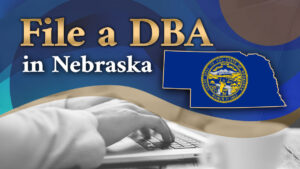Understanding a Board’s System: Key of Improving
Recent Breakthrough in Development: Systems Thinking
One of the recent breakthroughs in organizational and management development is the ability to understand organizations and each of the various functions in them as a system. Each of the functions, such as Boards, planning, leadership, management, marketing, sales and finances is a system. Each of these functions is also a subsystem in the overall system of the organization.
Our understanding of systems helps us to be much more effective in “diagnosing,” including to identify causes versus symptoms in order to improve the organization or any of its functions.
What is a System (Inputs, Processes, Outputs)?
A system is an ongoing series of activities focused on achieving an overall purpose. It has various subsystems, each of which is connected and aligned to achieve that overall purpose. For example a car is a system, but a pile of sand is not.
Systems have various inputs which are processed to produce various outputs. The inputs usually come from other systems and the outputs usually are input to other systems, as well. Strong alignment of these systems usually optimizes the performance of the system, as well.
What is the System of a Board of Directors?
Let’s look at the system of a Board of Directors.
Inputs
Typical inputs to Board operations include:
- Past evaluation results of Board
- Annual calendar of Board activities
- Strategic plan
- Business plans
- Stockholders’ expectations
- Laws and regulations on governance
- Employees
- Best practices on Boards
Processes
The typical recurring processes of a Board can be organized into four stages, including planning the Board, developing the Board, operating the Board and evaluating the Board.
Process: Planning the Board
- Develop Board policies and procedures
- Update Board member job descriptions
- Update the Board organization chart
- Develop Board Committee work plans
Process: Developing the Board
- Form Board Governance Committee
- Recruit new Board members
- Provide Board Manual to each
- Train members about Boards
- Orient members about the organization
- Organize members into committees
Process: Operating the Board
- Attend meetings
- Research, discuss and debate issues/topics
- Make motions and decisions
- Drive strategic planning
- Supervise the CEO
- Conduct public relations
- Review financials
- Declare stock equity and dividends (in for-profits)
- Drive fundraising (in nonprofits)
Process: Evaluating the Board
- Evaluate each meeting
- Evaluate quality of attendance, participation, teamwork, strategic decisions
- Evaluate Board operations annually
- Develop and implement Board Development Plan
Outputs
Examples of typical outputs or results from Boards include:
- Board minutes with decisions
- Directives to the CEO
- Public speeches
- Financial reviews
- Board Development Plan
- Updated Board policies and procedures
Here are several graphical depictions of a system of a Board. These depictions also are called logic models.
So What About “Diagnosing” the System of a Board?
It’s helpful to “diagnose” the performance of a system by working backwards from the quality of the system’s outputs, then examining each of its recurring processes, and then the quality of the inputs to the system (remember that these inputs often are outputs from another system.) A good Board evaluation would examine at least the occurrence and ideally the quality of the outputs, processes and inputs. Here are several Board evaluations.
Too often, we look primarily at the results, or outputs, of Board operations and then we exhort Board members to improve those results. If we also look at the processes then we can also mention those to members as ideas about how they can improve their results.
It’s beyond the scope of this blog post to go into much more detail about this diagnosis and steps for recovery. See the subtopic Free Complete Toolkit for Boards in the Free Management Library.
What do you think?
(This post was adapted from the book Field Guide to Consulting and Organizational Development by Carter McNamara, Authenticity Consulting, LLC.)
—————————————————————————-
Carter McNamara, MBA, PhD – Authenticity Consulting, LLC – 800-971-2250
Read my weekly blogs: Boards, Consulting and OD, Nonprofits and Strategic Planning.
 Sections of this topic
Sections of this topic
















